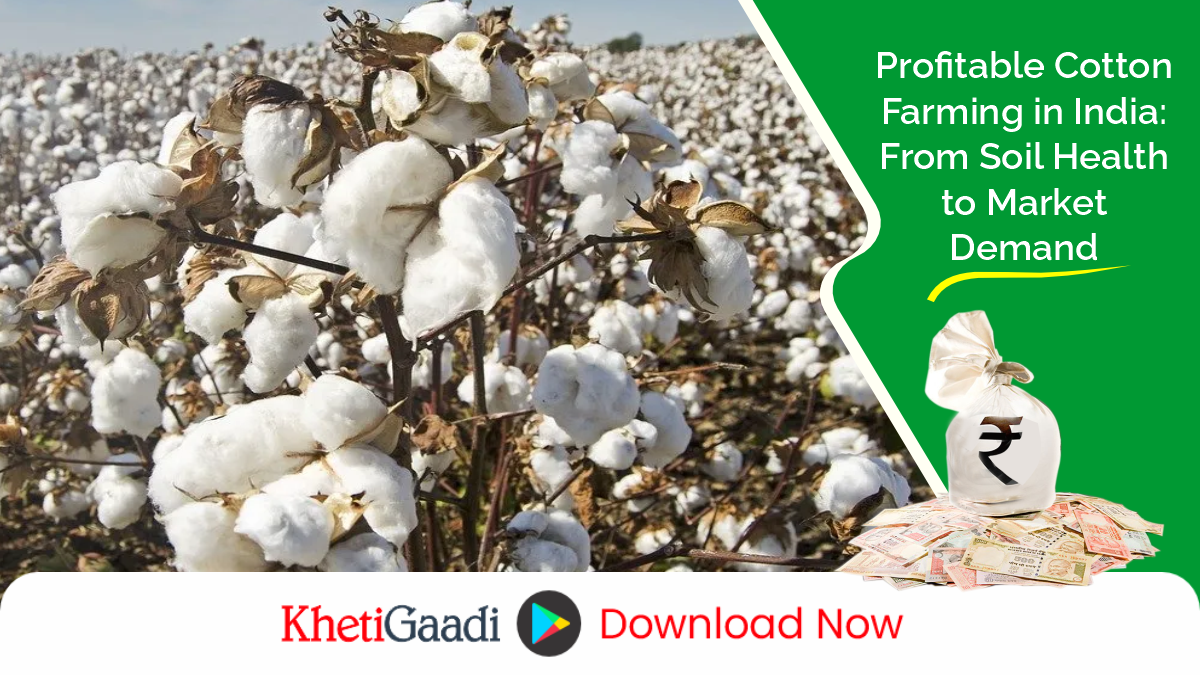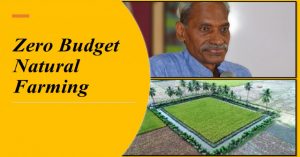Cotton farming is a significant source of livelihood in India, making the country one of the largest cotton producers globally. With the right farming practices, cotton cultivation can be a highly profitable venture. Here’s a guide on essential practices to maximize yields and profits in cotton farming.
Soil Health & Fertility
Healthy soil is crucial for a successful cotton crop. Cotton plants thrive in deep, well-drained soils with a pH between 6 and 7.5. Here are tips to maintain and improve soil health:
- Soil Testing: Before planting, test the soil to determine its nutrient levels. Cotton requires nitrogen, phosphorus, potassium, and micronutrients like zinc.
- Organic Matter: Incorporate organic matter, such as compost or farmyard manure, to improve soil structure and water retention.
- Crop Rotation: Rotating cotton with legumes or cereals can improve soil fertility and reduce pest pressure, benefiting both cotton yield and soil health.
Selecting the Right Cotton Varieties
Choosing the appropriate variety is essential for high yields and disease resistance. In India, varieties are broadly categorized as:
- Desi Varieties: Suited for rain-fed conditions, known for their drought tolerance.
- Hybrid Varieties: These are higher-yielding and can be used in irrigated areas.
- Bt Cotton: Genetically modified to resist bollworms, one of the major pests affecting cotton. Bt cotton has proven effective in boosting yields.
Select a variety suited to your region’s climate and resistance to local pests and diseases for optimal results.
Irrigation & Water Management
Cotton requires adequate and timely water, especially in the early stages. Over-watering and water stress during key growth stages can impact yields. Effective irrigation practices include:
- Drip Irrigation: This method conserves water by delivering it directly to the roots and reduces weed growth.
- Water Stress Management: Cotton requires consistent moisture during flowering and boll formation stages. Too much or too little water during these stages can affect the final yield.
- Scheduling: Adhere to a watering schedule based on the soil type, variety, and weather conditions to avoid over-irrigation.
Pest & Disease Management
Pests and diseases are significant challenges in cotton farming. Integrated Pest Management (IPM) practices are essential for minimizing damage and reducing costs:
- Common Pests: Cotton bollworm, aphids, and whiteflies are frequent pests. Plant-resistant varieties and introduce natural predators where possible.
- Bt Cotton: Farmers growing Bt cotton varieties benefit from reduced chemical spraying since Bt cotton is resistant to certain pests.
- Crop Monitoring: Regularly inspect plants for pest and disease symptoms. Early detection allows for timely intervention.
- Biological Controls: Use natural pest control methods such as pheromone traps and neem-based pesticides to reduce chemical dependency and maintain ecological balance.
Harvesting & Ginning
Timing and methods of harvesting are crucial for high-quality cotton production:
- Harvesting Timing: Harvest when 60-70% of the bolls are open, which prevents quality degradation.
- Manual or Mechanical: In India, manual harvesting is common and ensures less damage. However, mechanical harvesters can be efficient for large farms.
- Proper Ginning: After harvesting, ginning separates cotton fibres from seeds. Ensure that cotton is ginned appropriately to maintain its quality for the market.
Benefits of Cotton Farming
Cotton farming offers multiple benefits:
- High Demand: Cotton has a consistent market demand in textiles, providing farmers with reliable income.
- Value-Added Products: Byproducts such as cottonseed oil and cottonseed meal have a high market value.
- Government Support: The Indian government provides subsidies, insurance schemes, and minimum support prices (MSP), making cotton farming more profitable and secure.
Success Stories in Cotton Farming
1. Rajesh Patil from Maharashtra
Rajesh Patil, a farmer from Jalgaon, Maharashtra, transformed his cotton farm by switching to Bt cotton and adopting drip irrigation. With a reduction in pest attacks and improved water management, Rajesh’s yield increased by 40%. By leveraging government subsidies for drip irrigation and using high-quality seeds, he now earns around ₹1.5 lakhs per acre.
2. Sunitha Reddy from Telangana
Sunitha Reddy from Warangal, Telangana, started practicing organic cotton farming. She used organic fertilizers and pest management techniques and marketed her produce as organic cotton. Due to the high demand for organic cotton, Sunitha receives a premium price, earning nearly 20% more than conventional cotton farmers.
3. Mahendra Singh from Gujarat
Mahendra Singh, a farmer in Gujarat, adopted a multi-crop rotation with cotton and pulses. This practice improved soil fertility, and the reduced pest pressure increased his cotton yield by 30%. Mahendra used government subsidies to install micro-irrigation, which further boosted his profits.
Government Schemes for Cotton Farming
The Indian government supports cotton farmers through various schemes aimed at improving yields, reducing costs, and stabilizing incomes. Here are some key initiatives:
- Pradhan Mantri Fasal Bima Yojana (PMFBY): A crop insurance scheme that offers financial support to farmers in case of crop loss due to natural calamities. It helps cotton farmers mitigate risks.
- Sub-Mission on Agricultural Mechanization (SMAM): Offers subsidies on machinery and tools required for cotton farming, like sprayers, harvesters, and ginning machines. This support reduces labour costs and increases productivity.
- National Food Security Mission (NFSM): The NFSM promotes sustainable cotton farming practices, focusing on increasing productivity and soil health. Farmers can avail subsidies for seeds, pest management, and improved irrigation practices under this scheme.
- Minimum Support Price (MSP): Cotton has an MSP set by the government to ensure farmers receive a fair price, providing income security and protection from market fluctuations.
Reference Links
- Pradhan Mantri Fasal Bima Yojana (PMFBY): https://pmfby.gov.in
- Sub-Mission on Agricultural Mechanization (SMAM): https://agricoop.nic.in
- National Food Security Mission (NFSM) https://nfsm.gov.in
- Cotton Corporation of India (CCI): Provides market information and government policies related to cotton farming. https://cotcorp.org.in
- Indian Council of Agricultural Research (ICAR): Research and resources on cotton crop management and pest control. https://icar.org.in
Tags




